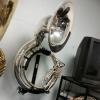-
Featured Topics
-
Topics
-
pwarrow88 ·
Posted in General Discussion3 -
anirudthelinuxwIzard ·
Posted in Troubleshooting1 -
13
-
2
-
Suryavardhan Singh Rathore ·
Posted in New Builds and Planning9 -
Caveman0407 ·
Posted in Laptops and Pre-Built Systems11 -
akio123008 ·
Posted in Home Theater Equipment6 -
KornyJ ·
Posted in New Builds and Planning5 -
1
-
JamZam ·
Posted in Troubleshooting10
-
-
play_circle_filled

Latest From ShortCircuit:
Lian-Li, do this on all of your cases! - Lian-Li O11D x Lamborghini

















Create an account or sign in to comment
You need to be a member in order to leave a comment
Create an account
Sign up for a new account in our community. It's easy!
Register a new accountSign in
Already have an account? Sign in here.
Sign In Now